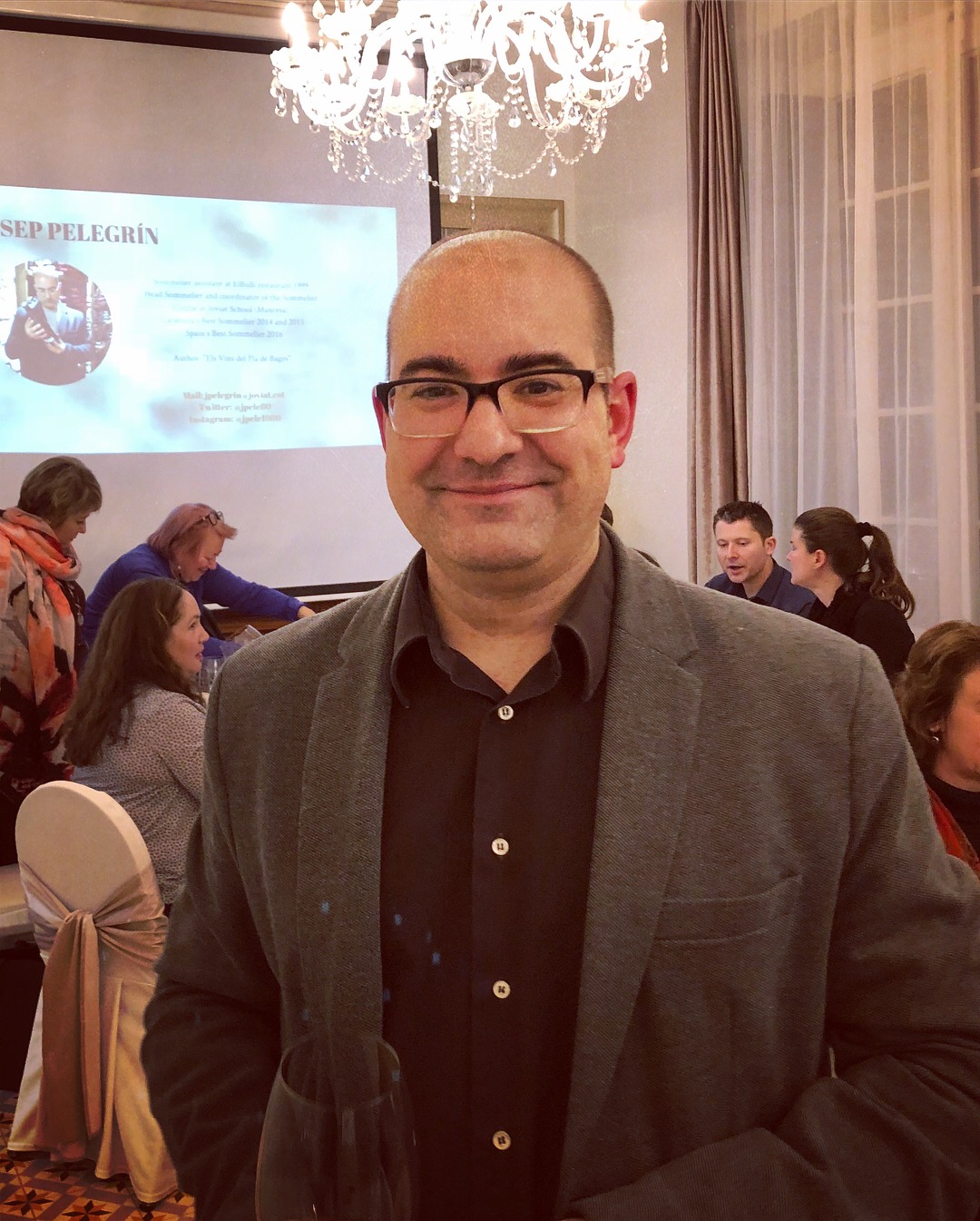With 40+ delegates from around the world, our #winelover community was ready to learn all things Tarragona.
Our group gathered in Tarragona at a lovely event space called Casa Joan Miret. The building was founded in 1859 and today, some of the building is residential, and the remainder provides a romantic meeting and event space, with a meeting room adorned with a high ceiling and crystal chandeliers, and then out to the patio to a grassy courtyard with a marquis tent, where we had our dinner
Getting our Costa Daurada On
The evening kicked off with a short presentation from Marta Farrero, technical director of the Costa Daurada Tourist Board. She presented a short film that outlined the region, and it made me want to return for a family visit. The Costa Daurada is a strip of Mediterranean coastline in Spain’s Catalonia region, southwest of Barcelona. Resorts and beaches line the coast, known for its calm, shallow waters. Tarragona, the area’s main city, has a Roman Tarragona Amphitheatre and a 12th-century cathedral. Nearby is a Roman Pont del Diable aqueduct. And wineries!
Next, we were welcomed to the area by Salvador Puig, director general of INCAVI, the Catalan Wine Institute. He provided a welcome that held back no political opinion, and informed us that when we see yellow ribbons on peoples’ lapels or on other objects in the region, they are the symbol of the Catalan people and the separatist movement taking place, and a quiet way to show political protest. I am going to leave that topic alone.
Blind Tasting of Catalan Wines
Josep Pelegrin, best sommelier of Catalonia 2014 & 2015 as well as best Spanish sommelier 2016 prepared a unique wine tasting for us.
We had a presentation to learn about the 12 Denominacions d’origen (D.O.s) that make up Catalunya:
- Alella
- Catalunya
- Conca de Barberà
- Costers del Segre
- Empordà
- Montsant
- Penedès
- Pla de Bages
- Priorat
- Tarragona
- Terra Alta
There are 35 varieties of authorized grape, both indigenous and international, and we tasted six in a blind tasting taste led by Josep Peregrin. We will never know the brands we tasted, as the idea was to show the flavours and varieties.
Macabeu
Unoaked – this one had extended skin contact and made like a red wine –Intense aroma of white flowers, lemon and some forest floor – the flavor is also intense with moderate acidity, nuts & lemon on the palate. Suggested to pair with salmon tartar or paella
White Granache – oaked
Aromas of apple & citrus carry to palate. Fresh & high acidity – makes this a mouthwatering choice to be enjoyed on own or with steamed clams or Catalan style chicken / white meats
Trepat
Violets and strawberries on a delicate nose. Light bodied palate presented fruit with pepper on the end.
Suggested food pairing is cold meats or roasted fish. I quite enjoyed this wine.
Sumoll
Locally called ‘ull de perdiu’ – which means “partridge eye” (had to throw a bird note in!)
High altitude planting and cool climate of this one maintains acid – and this was a very interesting taste because it was dark purple in colour and the nose for me was black fruit & leather, but then on the palate: LEMON!
Black Grenache
The nose was currant, blackberry, cinnamon, eucalyptus & dried prunes. The palate was ripe fruit & complex spice with balanced acid. Try this wine with roasted pork & foods cooked with baking spices.
Carinyena = Carignan
Usually blended with Grenache, the Carignan had aromas of blackberry, cassis, meat, & pepper: intense black fruit. The attack is ripe sweet fruit and the black fruit and spice carry to palate.
This wine is the one for slow cooked meats, and long braised dishes with herbs.
Overall, my impression is that the wines of the area are lighter and delicate, and as with most wine regions, would express themselves best in the symbiotic relationship with the regional foods. I appreciate the flavor profiles, and look forward to a deeper look.




“Sumoll Locally called ‘ull de perdiu’ – which means “partridge eye” (had to throw a bird note in!)”
Loved this bit!!! Thank you for sharing it is very informative!!
Debbie, it is thanks to the presentation of Joesp Pelegrin that I learned this – and thank you for taking the time to comment.